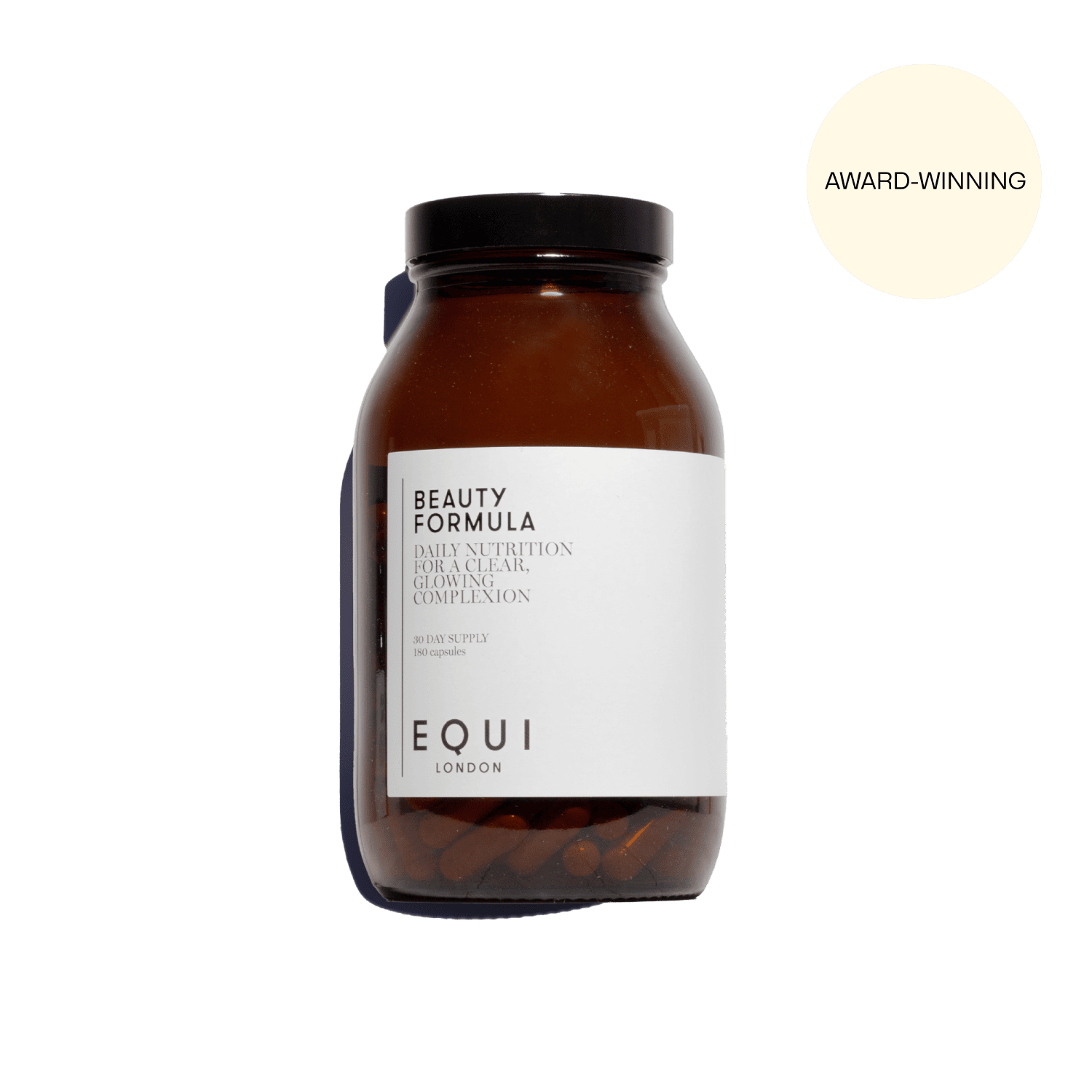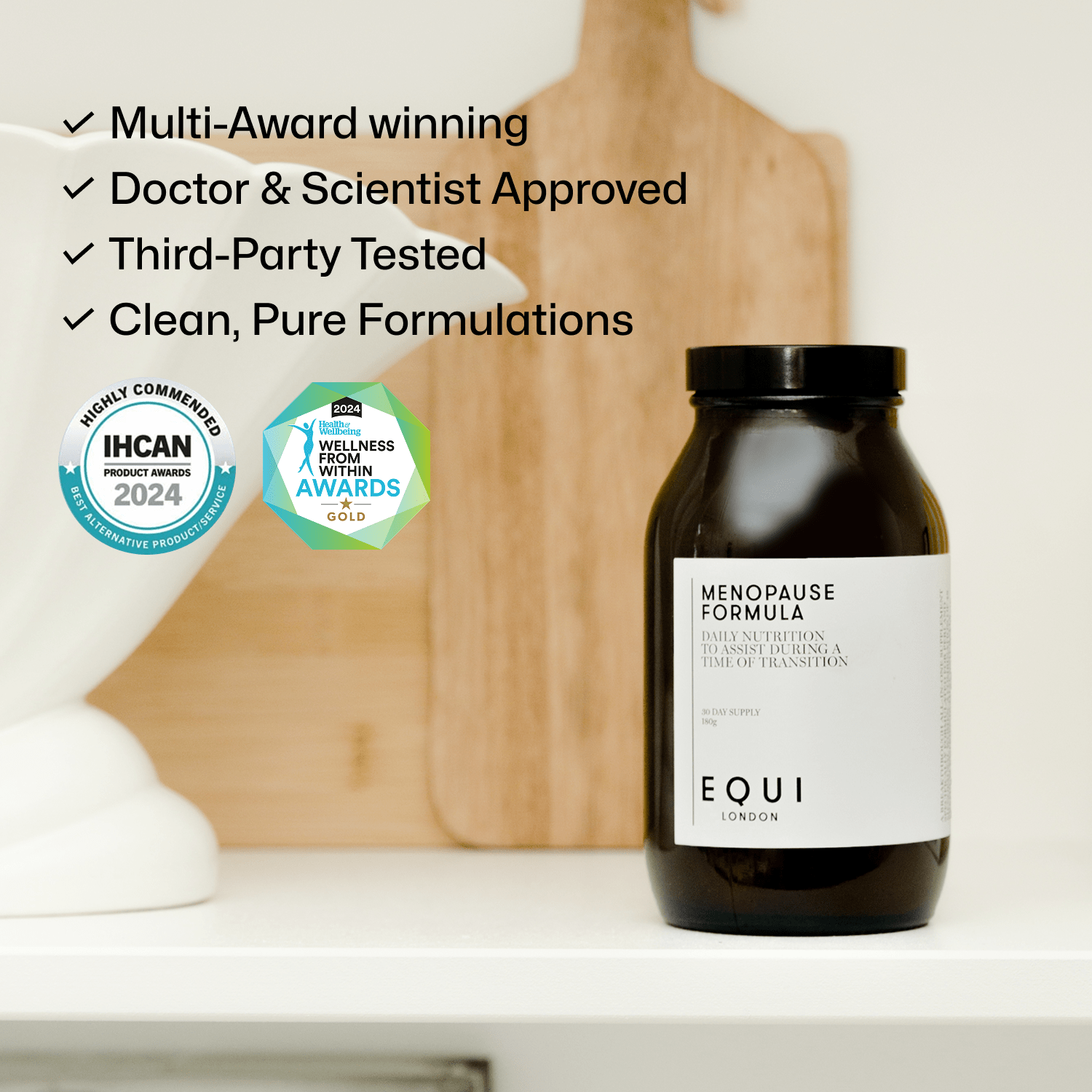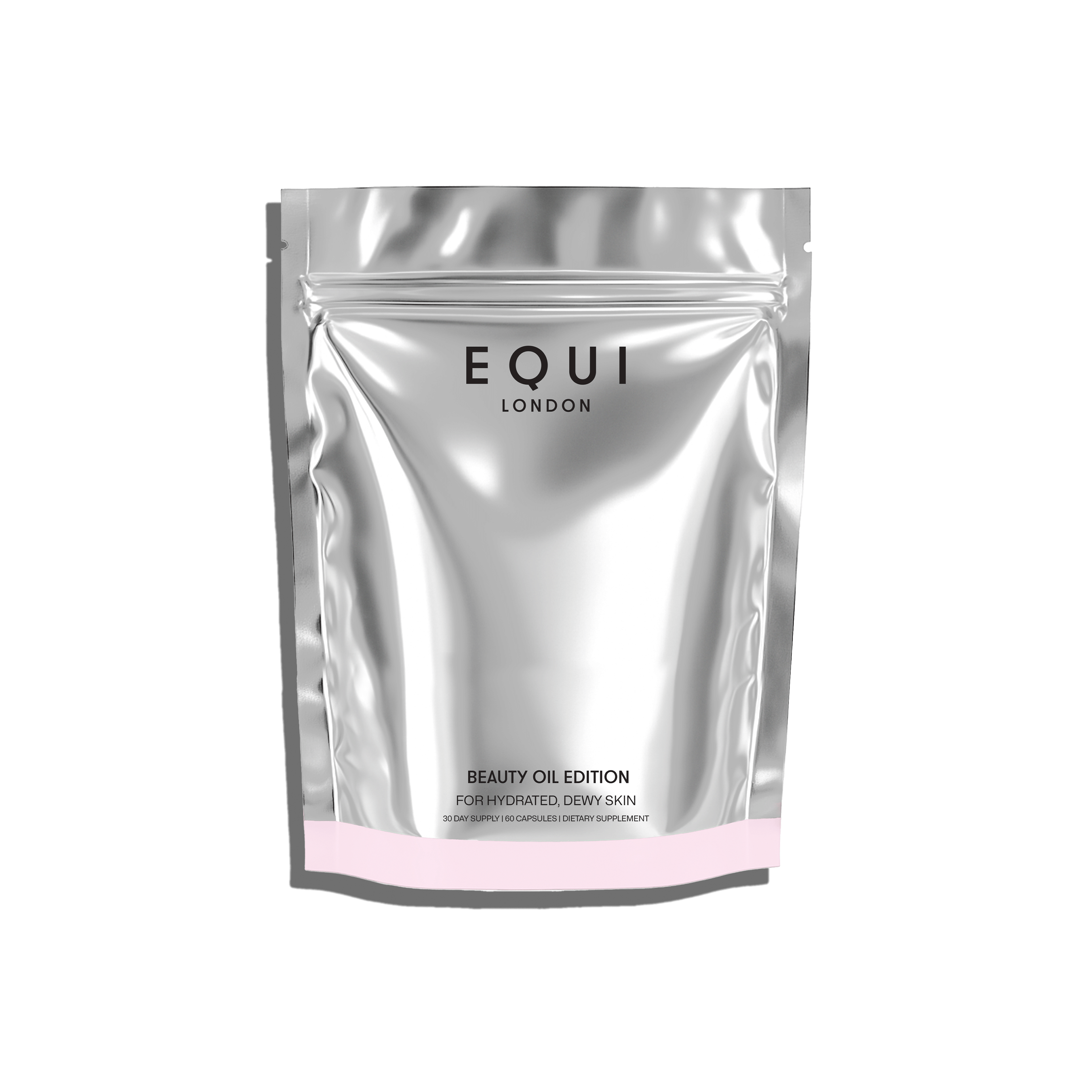Over the next four weeks, we are going to provide you with all the hints, tips, and tricks to get your skin summer ready with our Summer Skin Series.
Kicking it off this week, we investigate those dreaded dark circles, what causes them, how to reduce them through diet and lifestyle as well as our favourite skincare ingredients to help banish the eye bags!
What Causes Dark Circles?
Dark circles are a common issue that is often associated with lack of sleep. However, several other factors can also cause them, such as genetics, sun damage, and allergies. Studies have shown that these factors can cause significant pigmentation changes in the skin, which leads to the formation of dark circles (1). Genetics and certain genes are responsible for the skin’s pigmentation process, which contribute to dark circles (2). Sun damage is another factor that can contribute to the formation of dark circles. This increases the production of melanin in the skin, which leads to pigmentation changes that may cause dark circles (3). Exposure to the sun's harmful UV rays can also lead to the breakdown of collagen and elastin fibres, which can worsen dark circles (4). Finally, allergies also play a crucial role in the formation of dark circles as allergic reactions can cause inflammation around the eyes, leading to the appearance of dark circles. Allergies activate the body's immune response, leading to the release of histamine, which causes puffiness and dark circles (5).
What Nutrients Can Help?
There are several nutrients that when supplemented and used topically, can help reduce the appearance of dark circles under the eyes by promoting circulation, reducing inflammation, and supporting healthy collagen production. Our highly rated Beauty Formula contains a blend of the most effective nutritional compounds proven to combat skin concerns, including dark circles and here’s how:
Vitamin C:
This antioxidant helps to protect the skin from oxidative stress and promotes collagen synthesis. Studies show that taking vitamin C supplements for 8 weeks significantly reduced the appearance of dark circles under the eyes (6). Vitamin C foods include berries, citrus fruits, kiwis, tomatoes, broccoli, and red peppers. Applying vitamin C topically is backed up by science too – it resulted in significant improvements in the appearance of under-eye darkness and fine lines (7).
Vitamin K:
This helps to reduce the appearance of dark circles by promoting healthy blood flow and reducing inflammation. Foods high in vitamin K include green leafy vegetables, dairy, eggs and nuts and seeds. In addition, applying creams containing vitamin K to the skin under the eyes for 8 weeks has been shown to significantly reduce the appearance of dark circles (8).
Vitamin A:
As with vitamin K, this may help to reduce dark circles by improving blood circulation and reducing inflammation. It can also help to protect the skin from damage, which can help to reduce the appearance of dark circles. Foods that contain vitamin A include carrots, sweet potato, dairy, eggs, and apricots.
Hyaluronic acid:
Research has shown that hyaluronic acid supplementation can help combat dark circles by improving the skin’s moisture levels and reducing inflammation. Topical application of hyaluronic acid reduced the appearance of dark under-eye circles after just one week of use (9). Another study found that oral supplementation with hyaluronic acid improved skin hydration and elasticity, which may also help to reduce the appearance of dark circles (10). Read more about Hyaluronic acid here
Collagen:
This is a protein that gives the skin its strength and elasticity. As we age, our bodies produce less collagen, which can lead to the development of dark circles. Eating foods that are high in collagen, such as bone broth, chicken, and fish, can help to keep the skin looking young and healthy. Beauty Formula contains GlowCutis®, a blend of type 1 marine collagen peptides, alongside other nutrients such as hyaluronic acid, vitamin C and zinc.
Zinc:
This mineral plays a critical role in collagen production and wound healing. It also helps to reduce inflammation and protects the skin from damage caused by free radicals. Supplementing zinc for 8 weeks has been shown to significantly reduce the appearance of dark circles under the eyes (11). Zinc rich foods include pumpkin seeds, oysters, and dark chocolate. Not only one to supplement, creams containing zinc have been shown to help to reduce the appearance of under-eye circles too (12).
Iron:
This mineral is essential for healthy blood flow and oxygenation. Low iron levels can lead to the blood vessels under your eyes becoming more visible, which can make dark circles appear more pronounced. The richest sources of iron are liver and red meat, but this can also be obtained from spinach and lentils too. Interestingly, one study found that an iron-containing gel was effective in reducing the appearance of dark circles under the eyes (13).
Beauty Formula and Beauty Oil Edition are the perfect pairing to combat dark circles. Beauty Oil Edition is the first beauty-specific omega 3 Krill oil supplement, with a natural anti-inflammatory effect, which may help to reduce any allergy related dark circles.
Omega-3 fatty acids:
These healthy fats are known for their anti-inflammatory properties. Studies have found that omega-3 supplementation led to a significant decrease in inflammatory markers in the body (14).
What Other Product Ingredients to Look For (and Avoid).
When it comes to skincare, some ingredients have been shown to reduce dark circles, such as caffeine, niacinamide, and retinol. It's also helpful to note ingredients or products that may worsen the problem, like heavy fragrances, alcohol-based toners, or certain eye makeup.
Caffeine:
This is a vasoconstrictor, which means it can help to reduce the appearance of dark circles by constricting the blood vessels under the eyes. This can help to reduce the amount of blood that is visible through the skin, which can make dark circles appear less pronounced. Applying a cream containing caffeine to the skin under the eyes for 8 weeks has been shown to significantly reduce the appearance of dark circles (15).
Niacinamide:
A form of vitamin B3 that has been shown to have a variety of benefits for the skin, including reducing dark circles. Niacinamide can help to improve the skin's hydration and elasticity, which can reduce the appearance of dark circles. Niacinamide can also help to reduce inflammation, which also contributes to dark circles.
Retinol:
A form of vitamin A that can help to increase the production of collagen and elastin in the skin, therefore reducing the appearance of dark circles. It can also help to reduce the appearance of hyperpigmentation, which is another common cause of dark circles. Applying a cream containing retinol and niacinamide to the skin under the eyes significantly reduced the appearance of dark circles (16).
If you are looking to reduce dark circles, it is important to avoid using products that contain fragrances, alcohol, or certain eye makeup. The skin around the eyes is very delicate, and fragrances can irritate it and make dark circles worse. The skin around the eyes is also very prone to dryness, and alcohol-based toners can make this worse. This can cause the skin to become thin and saggy, which can make dark circles more pronounced. Certain eye makeup, such as eyeliner and mascara, can irritate the skin around the eyes and make dark circles worse. Instead, look for products that are fragrance-free, alcohol-free, and hypoallergenic.
Lifestyle Habits for Brighter Eyes
Small lifestyle changes can also make a big difference, like hydration, stress reduction, exercise, and avoiding smoking or excessive alcohol. Additionally, hygiene and eye care, such as washing the face before bed, avoiding harsh rubbing, and using a gentle eye cream can all help. Here are some of our favourite lifestyle tips to reduce dark circles:
- Sleep deprivation can make dark circles worse – we recommend 7-8 hours sleep per night. Achieve this by suitably winding down in the evening. I.E., avoid scrolling on your phone in the evening! Turn all devices off no later than 9pm if you want good sleep. The blue light emitted can impact melatonin production, (the sleepy hormone) and therefore impact sleep quality.
- Stress is a common cause of dark circles. Managing stress through activities like meditation, yoga, and exercise can improve the appearance of dark circles in the long-term. Choose an activity that you enjoy to relieve stress as consistency is key here.
- Stay hydrated. Drinking plenty of water can help to keep the skin hydrated and reduce the appearance of dark circles (17). Little and often is key when it comes to hydration – sipping on water throughout the day helps plump up the skin cells and keeps you hydrated. Aim for around 2.5L per day.
- An obvious one but important to mention - Avoid smoking and excessive alcohol, as they can damage the skin and make dark circles worse. Aim for at least 4-5 alcohol free days per week and no more than 2 drinks in a day. This should have a significant impact on those dark circles.
- Use an SPF and wear sunglasses. Sun exposure can damage the skin, cause hyperpigmentation, and make dark circles worse. Even on a gloomy day, UV rays and impact the skin, so using a high factor SPF all year round is an easy win.
- Apply a cold compress. A cold compress can help to reduce any swelling and inflammation, which can make dark circles look less pronounced. We are fans of ice globes or cryo products personally, but you can also achieve this by simply using ice cubes wrapped in a clean face cloth. Cold therapy can work wonders!
- Facial massage and lymphatic drainage may also help reduce dark circles. You can do this simply at home by applying your middle and index fingers to your inner and outer corners of the eye area and gently massaging around the eye sockets. Seeking a professional facial massage would also be a great idea – somewhere like face gym.
Remember that everyone's skin and lifestyle is unique, so there is no one-size-fits-all solution. Try out some of our suggestions to find what works best for you, and if you need additional guidance, reach out to a registered nutritionist or dermatologist.
References:
-
Aslam, I., & Fleischer, A. B. (2013). Sun damage. BMJ Clinical Evidence, 2013, 1716.
-
Halder, R. M., & Richards, G. M. (2005). Topical agents used in the management of hyperpigmentation. Skin Therapy Letter, 10(6), pp. 1-3.
-
Rongioletti, F. (2013). Dark circles under the eyes. Clinics in Dermatology, 31(1), pp. 30-41.
-
Schiffner, R. (2003). Dark circles under the eyes: causes and remedies. Aesthetic Plastic Surgery, 27(3), pp .228-234.
-
Wehr, R. F. (1996). Allergic inflammation and dark circles under the eyes. Ophthalmology, 103(10), pp. 1529-1530.
-
Chen, X., Wang, Y., Wang, X., & Wang, J. (2017). The Effect of Oral Ascorbic Acid Supplementation on Dark Circles Under the Eyes: A Randomized, Double-Blind, Placebo-Controlled Trial. Skin Pharmacology and Physiology, 30(1), pp. 24-28.
-
Telang PS. (2013). Vitamin C in dermatology. Indian Dermatol Online J. 4(2): pp. 143-146.
-
El Safoury OS, El Fatah DS, Ibrahim M. (2017). Treatment of periocular hyperpigmentation with newly developed vitamin K/vitamin A cream: a double-blind, placebo-controlled clinical trial. Dermatology and Therapy. 28(6), pp. 701-709.
-
Lee, H.J. et al. (2017). Clinical efficacy of a novel formulation of hyaluronic acid, collagen, and antioxidants on the hydration and elasticity of peri-orbital skin. J Cosmet Dermatol, 16(1), pp. 45-51.
-
Sato T, Sakamoto K, Odanaka W, Yoshida K, Urushibata O. (2012). Clinical effects of dietary hyaluronic acid on dry, rough skin: A double-blind, placebo-controlled study. J Cosmet Dermatol. 11(4): pp. 256-260.
-
Al-Dhaheri AM, Al-Mutawa HM, Al-Zahrani AS, Al-Qahtani MS, Al-Otaibi AM. (2015). Effect of zinc supplementation on periorbital hyperpigmentation: a double-blind, placebo-controlled clinical trial. Skin Pharmacol Physiol.;38(4) pp. 227-233.
-
Roos TC, Alam M, Klein SL, et al. (2017). Zinc oxide: A new generation of sunscreens. Mini Rev Med Chem. 17(10) pp. 920-930.
-
Goh CL, Dlova CN. (2019). A retrospective study evaluating the efficacy and tolerability of a 2% topical iron solution in improving the appearance of periorbital hyperpigmentation and erythema. J Cosmet Dermatol. 18(4), pp. 1084-1089.
-
Calder PC. (2017). Omega-3 fatty acids and inflammatory processes: from molecules to man. Biochem Soc Trans. 45(5), pp. 1105-1115.
-
El Safoury OS, El Fatah DS, Ibrahim M. (2017). Treatment of periocular hyperpigmentation with newly developed vitamin K/vitamin A cream: a double-blind, placebo-controlled clinical trial. Dermatology and Therapy.;28(6), pp. 701-709.
-
El Safoury OS, El Fatah DS, Ibrahim M. (2017). Treatment of periocular hyperpigmentation with newly developed vitamin K/vitamin A cream: a double-blind, placebo-controlled clinical trial. Dermatology and Therapy. 28(6), pp. 701-709.
-
Aas, M., Berdal, A., Fagerlund, A., & Berge, G. (2000). The skin hydration, barrier function and antimicrobial barrier properties of the human stratum corneum after high water intake. International Journal of Cosmetic Science, 22(2), pp. 121-127.













